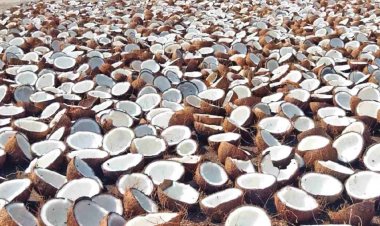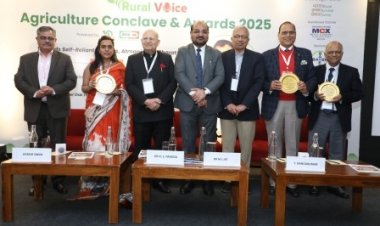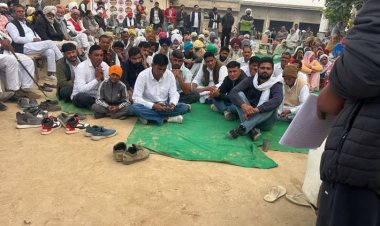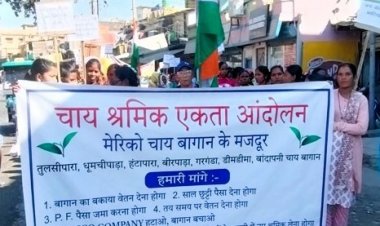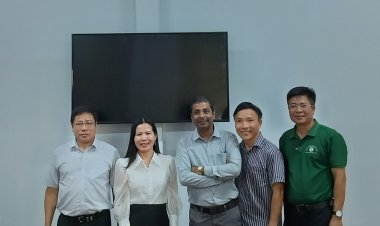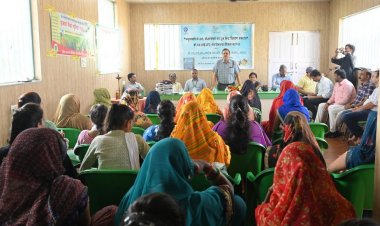Successful transition to sustainable agricultural practices will require stakeholders to work collaboratively
A white paper on “Sustainable Agriculture and Food Systems in the Global South: An Indian Perspective” tries to bridge the gap between sustainability and scalability. It has been published by Echo Network, a social innovation partnership initiated in 2019 by the Principal Scientific Adviser to the Government of India along with multiple stakeholders.

On the one hand, the ability to grow grains in high quantities has massively reduced the starvation and malnourishment of our world’s population. But at the same time, the current practices used are not sustainable. On the other hand, while our traditional practices are sustainable, they are not scalable. The real dilemma is to connect these two strategies together.
A white paper on “Sustainable Agriculture and Food Systems in the Global South: An Indian Perspective” tries to address this problem. It has been published by Echo Network, a social innovation partnership initiated in 2019 by the Principal Scientific Adviser to the Government of India along with multiple stakeholders. A result of a panel discussion during the RISE World Summit in January 2022, it has been prepared by a Consortium, which has Dr RS Paroda, President, Indian Society of Plant Genetic Resources (ISPGR), as a member.
“The successful transition to sustainable agricultural practices will require decision-makers, investors, farmers, distributors, retailers and consumers to work collaboratively. Such a transition will require major shifts in our strategies and behaviour. We need to promote strategies that take into account social, human and natural capital growth, in addition to monetary profits,” says the white paper.
The white paper recommends 10 starting points to enable this transition in India, with a viewpoint to future contextualization to the Global South. One, establish market mechanisms and economic stewardship that prioritizes duty of care for ecosystem services to enhance community adoption and improve farmer livelihoods. It should be ensured that farmers have multiple revenue streams. The support for this can be redirected from schemes that are currently being used for subsidies, farmer credit, waiving of loans, electricity, etc.
Two, create human-centred projects in which stakeholders and scientists work closely together to enable direct knowledge transfer. The white paper gives the example of how public-private partnerships in Denmark and southern Scandinavia have a Plant Biologicals Network. Industry, organizations and universities work here together and exchange ideas not only for crop protection but also for bio-fertilizers and bio-stimulants.
Three, initiate farmer groups where many farmers participate to discuss issues related to their farms together with professional advisors. This will help in both production and marketing.
Four, build an industry consortium with a commitment to keeping a proportion of the retail value within the rural setting for farm produce, value addition, processing, storage or bio-inputs to ensure better value for all stakeholders. Enterprises can also be created around farm activities to produce food.
Five, promote alternative uses of agricultural biomass such as crop residues, animal waste, food and processing waste and by-products, leaves, straw, seaweeds, etc.
Six, increase literacy around food systems amongst policymakers, bankers, micro-lending institutions, cooperatives and the larger public. Current policies and practices can be reoriented through targeted awareness campaigns.
Seven, create consumer demand by producing material that provides education on the benefits of non-chemical farming and similar mass media outputs through various communication channels. This will enhance consumer awareness as well as incentivize the farmers.
Eight, build the capacities of young farmers to empower them to negotiate their needs and demands. This can be done by setting up workshops and developing easy-to-read toolkits.
Nine, develop customer centres and services to allow farmers to take maximum advantage of new technologies, policies and schemes. Often, things are designed for large agricultural fields that can use heavy machinery. These may be customized with the help of Self-Help Groups (SHGs) or farmer cooperatives.
Ten, establish effective think tanks that influence the decisions of policymakers. This will help in avoiding policies leading to overexploitation of natural resources. Rather, such policies should be promoted as scale innovations that save water, promote biodiversity and improve soil health.
The white paper points to the need to understand the interrelationships between the various actors and stakeholders in our agriculture and food systems. It concludes that only by creating policies and practices that integrate social, environmental and economic interests can societies promote more sustainable food security. “There is enormous power when all stakeholders come together” is the resonating message of the conclusion.



 Join the RuralVoice whatsapp group
Join the RuralVoice whatsapp group

















